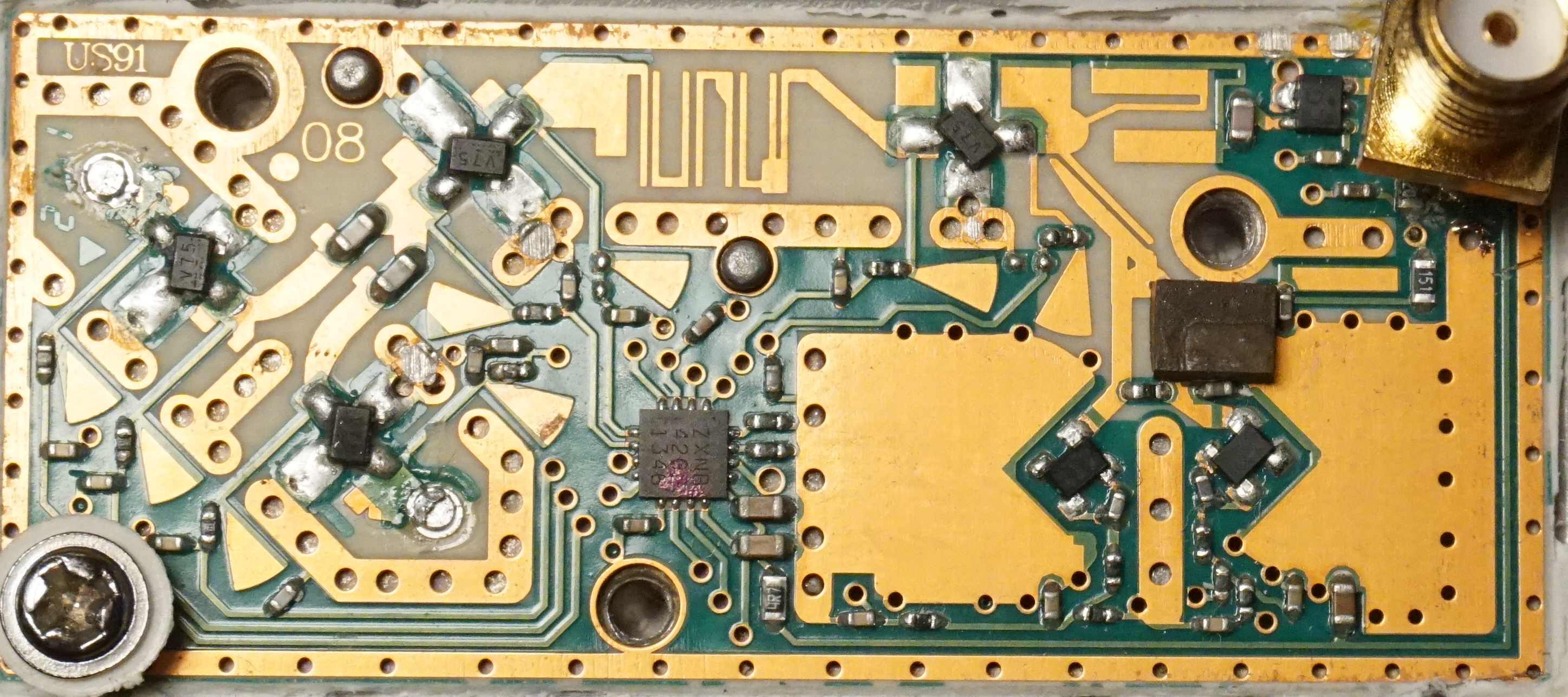
Low Noise Block downconverters are compact devices that go onto a satellite dish for TV reception or other Rx-only purposes. They are ubiquitous and cheap. Due to their simplicity they can be repurposed for reception of anything in the Ku-band of microwaves (cm waves, 12-18 GHz). Because of their low integration scale and relative simplicity of microwave circuits (low transistor count), they can also be easily modified for experimentation in this frequency range.

In Europe, satellite TV is transmitted in the 10.7 - 12.75 GHz range. The LNB receives the microwave signal from the dish, usually from a TV satellite (In Europe, SES Astra and/or Hotbird 13E) and converts it to a UHF signal that can be transmitted via the coaxial cable into the set top box (STB).
The conversion is done by mixing the incoming signal with a local oscillator (LO) inside the LNB and outputting the frequency difference on the cable to the STB. The whole band used for satellite TV downlink is however too wide. At about 2GHz range it would be not feasible to demodulate all of it with a single tuner. Most "Hyperband" TV tuners operate from 50-ish to 850-ish MHz and this limit is imposed by the PLLs inside them. Take for example a TDA6404 PLL which operates from 45.25 to 855.25 MHz with a small gap at around 400MHz
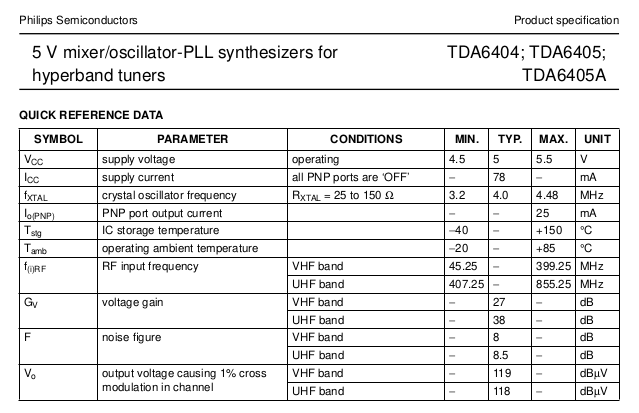
The solution is simple. The LNB actually has two local oscillators, and a signal from the STB switches between the high and low range. This way you can still reuse existing and well developed hyperband tuners (used for CATV), and if the viewer wishes to see a channel from the upper half of the band, you just signal the LNB to switch LOs. The signal is a 22kHz, 600mV tone superimposed onto the LNB's input signal (which also carries RF signal and DC power).
If the 22kHz tone is detected by the LNB, it switches it's local oscillator to the high band.
Various LNB models differ, but the low band LO frequency is usually 9.75 GHz and the high band LO is usually 10.60 GHz.
Another issue is signal polarization. I will not be going into much details here. The LNB has the ability to select between receiving either horizontally or vertically polarized signals. The selection is done by switching the supply voltage. The switch level is 13V.
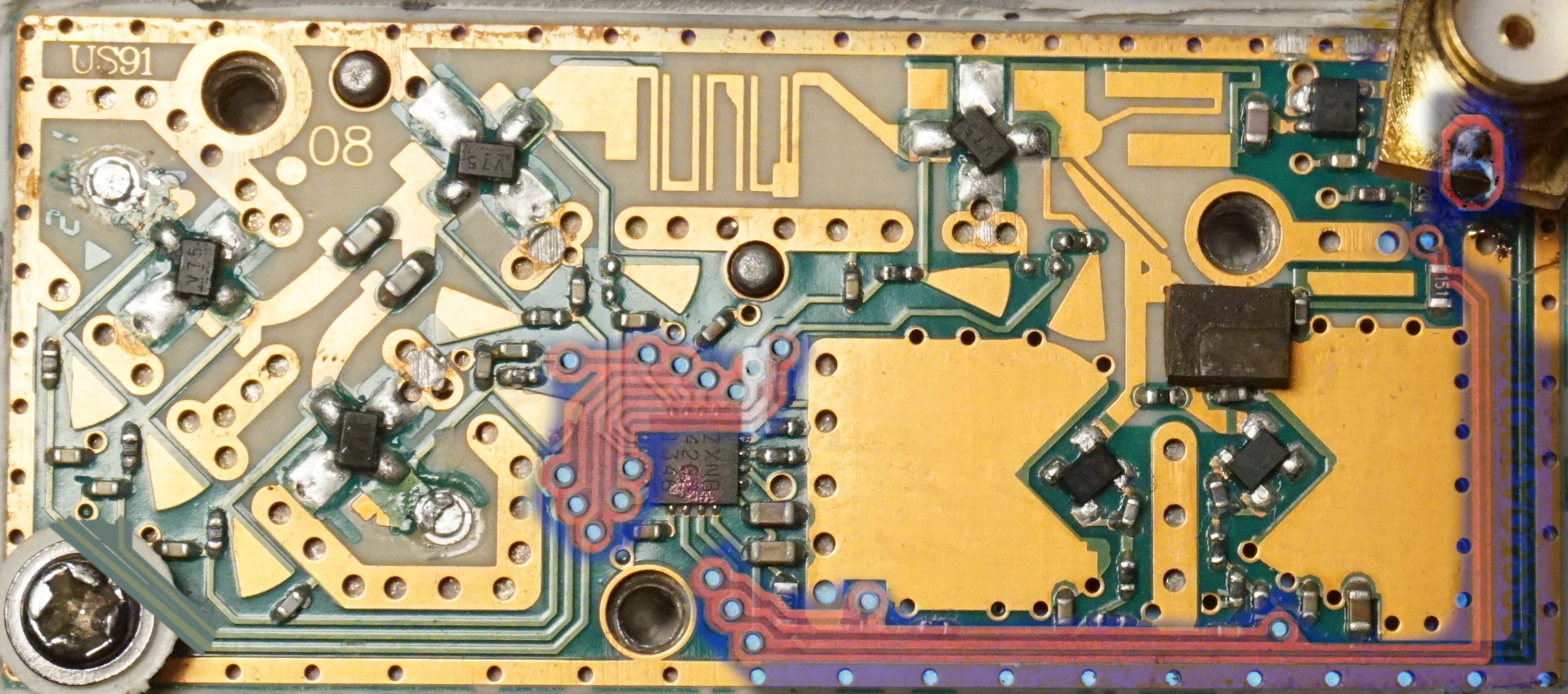
On the image above I have shown the two sides of the LNB circuit board overlaid on each other, like in a PCB design program. You can see how the central IC deals with biasing the various transistors. This IC detects the signals used for band and polarization switching, and biases on/off the correct transistors in the circuit.
 .
.
The LNB construction is surprisingly simple. Apart from the afromentioned LOs and a mixer, there is also an input preamplifier that amplifies the signals from the waveguide horn feeds, and a controller which switches the bias voltages to select the LO and the V/H polarization (this LNB does it by switching the bias voltage to either of the first gain stages, labeled here Q1, Q2.
Q3 is a second amplification stage. Then the signal goes though a microstrip band-pass filter and next on to Q4 which is a third amplifier stage. Q1 through Q4 are marked V75 which makes them NE3503 N-channel JFETs for microwave application ("C to Ku band"). All these transistors are used in common source topology, the signal goes on gate, amplified signal is taken on drain and sources are grounded.
I believe that Q4 is also used as a mixer. The LO signal is coupled to it's drain using the structure hilighted in blue. I think this LNB, like most of them use a dual mixing topology. The frequency maths would indicate this. I think the unlabeled IC next to the SMA connector is a second mixer. Note that this SMA has been attached by me, as the LNB by default uses an F connector to coax.
In the picture there are also two LOs. They are dielectric oscillators based around transistors Q5 and Q6. These transistors are marked T79 which makes them 2SV5508 microwave NPN Si transistors with a gain-bandwidth product of 25GHz. I think Q5 is the low band LO.
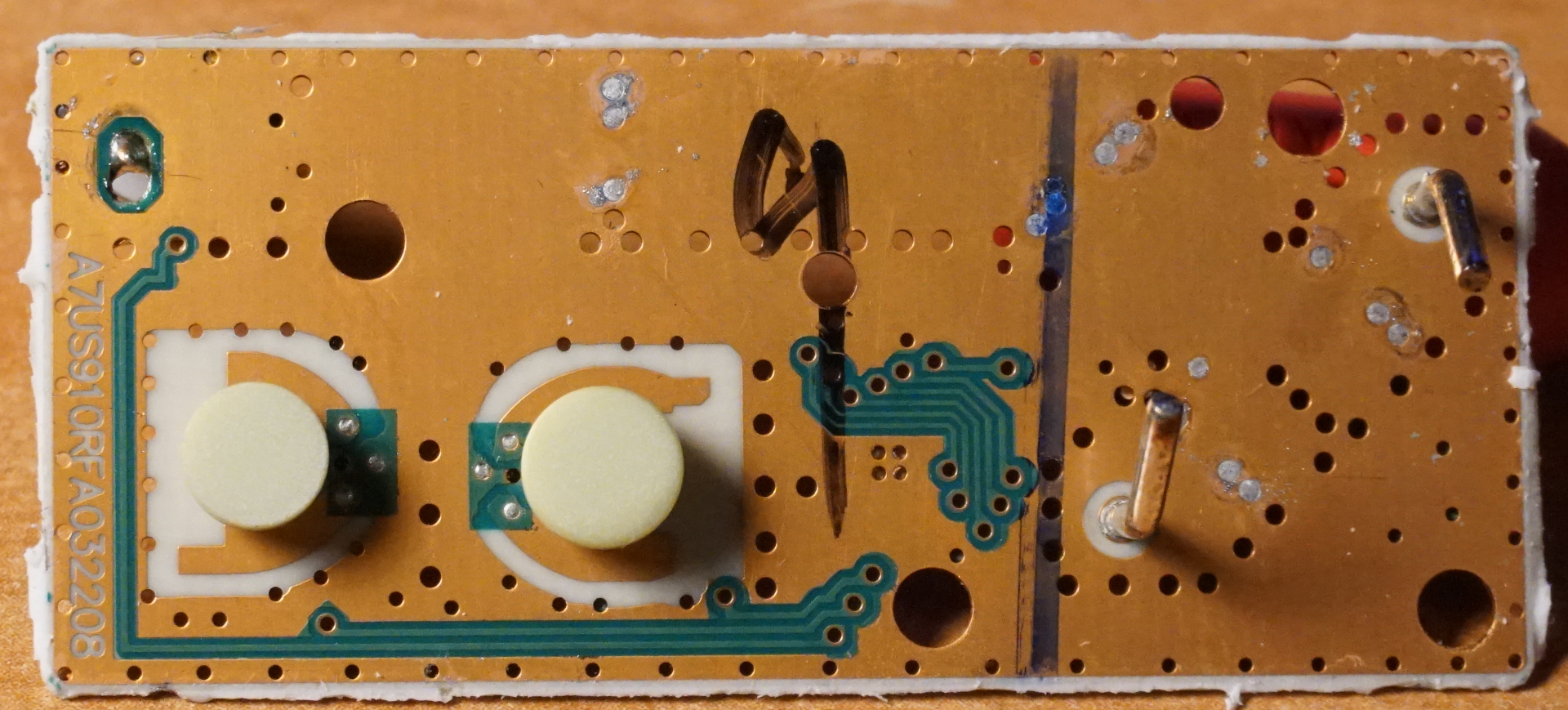
On the other side of the board there are two mushroom-like structures from a dielectric material, that together with the LNB chassis form a microwave cavity resonator used by the LOs. The resonator frequency is tuned by a screw in the cavity. You can see the two bent wires which form the microwave horn feeds for either polarization.
In order to change the LNB into a microwave transmitter, I've used some thin coax cable to jump the LO output directly to one of the feedlines in the horn. I've desoldered the preamp transistors so that they don't intefere. This way the LO signal is directly coupled to the feed and radiated. This results in extremely low power transmission at the LO frequency.
As I do not have access to a microwave spectrum analyzer (well, technically, my HP8591A goes up to 1.8GHz which is considered "microwave", but it's way below the LO frequency), I had to use a different LNB to receive the signal. I've powered both of the LNB's via home made bias-tees and connected the receiver LNB to my spectrum analyzer.
Both of the LNBs were factory tuned which means the LO frequencies would be identical. While the receiver LNB would see and amplify the input of the LO from the transmitter, the relative LO difference would be very small and it would mix down to a low frequency. For this reason I had to detune the transmitter LO using the tuning screws located on the transmitter chassis. I found out that as I tune the transmitter LO, it starts to pick up the signal and output it starting at 30-ish MHz on the spectrum analyzer. This agrees with the typical hyperband tuner input frequency range.
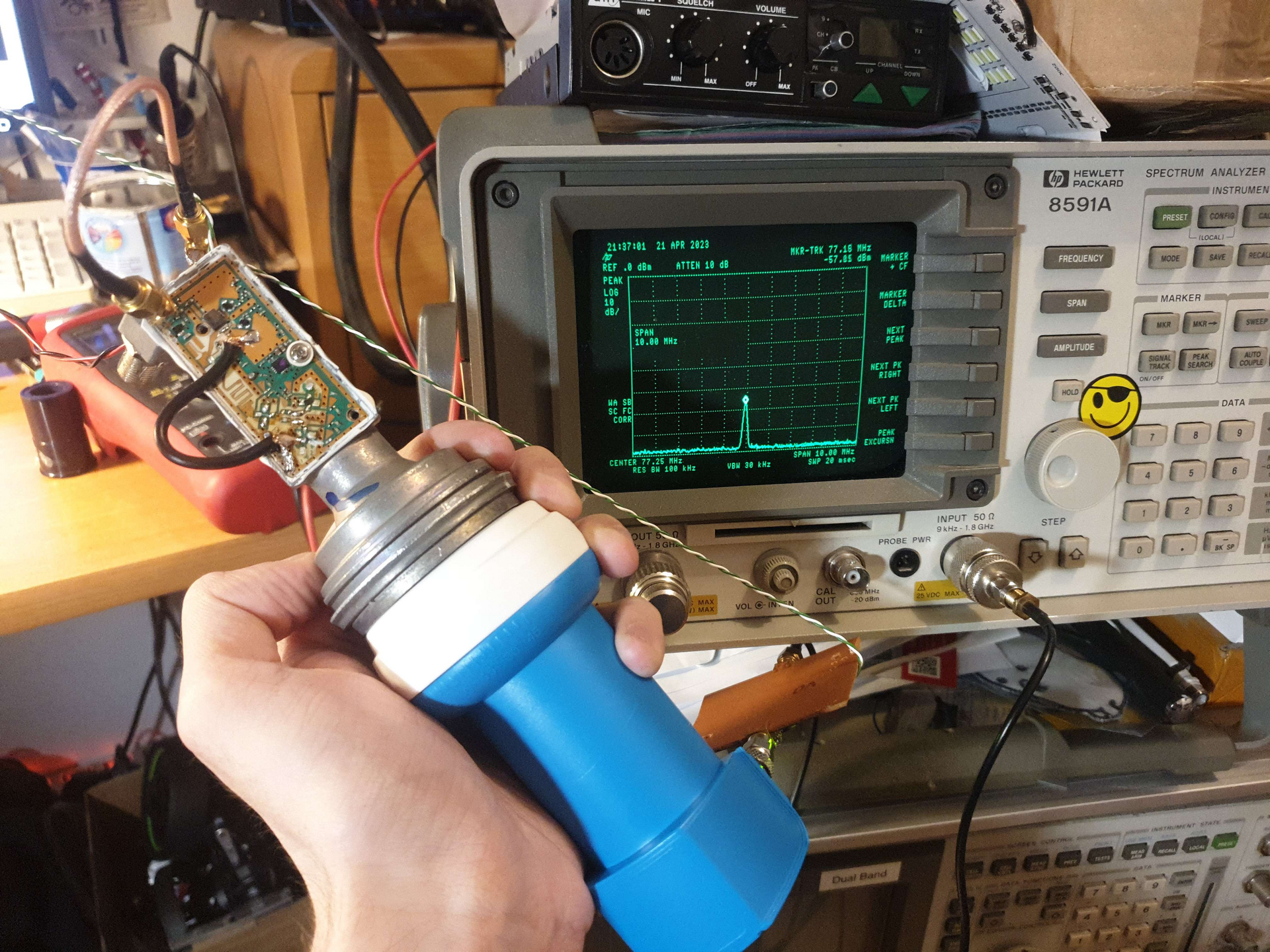
The signal is very weak, as even amplified by the LNB, it's -50dBm (bear in mind impedance mismatch, specan is 50 ohm, LNB is 75 ohm, so it's just a bit stronger). It is also hard to catch the signal even with the LNB horns touching each other. This might be partly to me not screwing down the Tx LNB PCB to the chassis good enough (only 1 screw), so any mechanical stress would lift the PCB and knoc out the LO oscillation due to changing the resonator dimensions.
The tuning range of the LNB LO is about 100 MHz, which is the screw length limit. Ideally, i would have the Tx and Rx LO difference at about 150MHz, which would cause the Rx LNB to output a signal at that frequency. This way by modulating the Tx LO frequency with AF (audio frequency), I could use any VHF radio to receive the modulated audio. This is my plan for the next experiment.
Another thing to consider is amplification of the Tx signal. I first attempted to rotate Q1 by 180 degrees and solder it down, but I got no signal. Later I realized, that while rotating it, i swapped gate and drain places, I did not swap the bias voltages. I will solder it down again and fix up the traces with wire, so that what was the drain bias now goes to the train and what was gate bias now goes to the gate. I left the control IC in place which generates these voltages.
There are a few ways to modulate the LO frequency. The simplest one would be to turn the oscillator transistor, or any of the other transistors, into a mixer by injecting the signal into it's other port (compare 1 transistor mixer schematic with common emitter amplifier schematic). This is not doable here because all emitters/sources are tied sharp to ground. Another way is to modulate the LO's Vcc or bias voltage, and while this may be very nonlinear, it will work and is easy to mod on the PCB. It will also work well for modulating HF and UHF signals.
I will keep this file updated as I experiment more with the LNBs. Once you get all the kit (and you don't need a Ku band spectrum analyzer), microwave becomes quite easy.